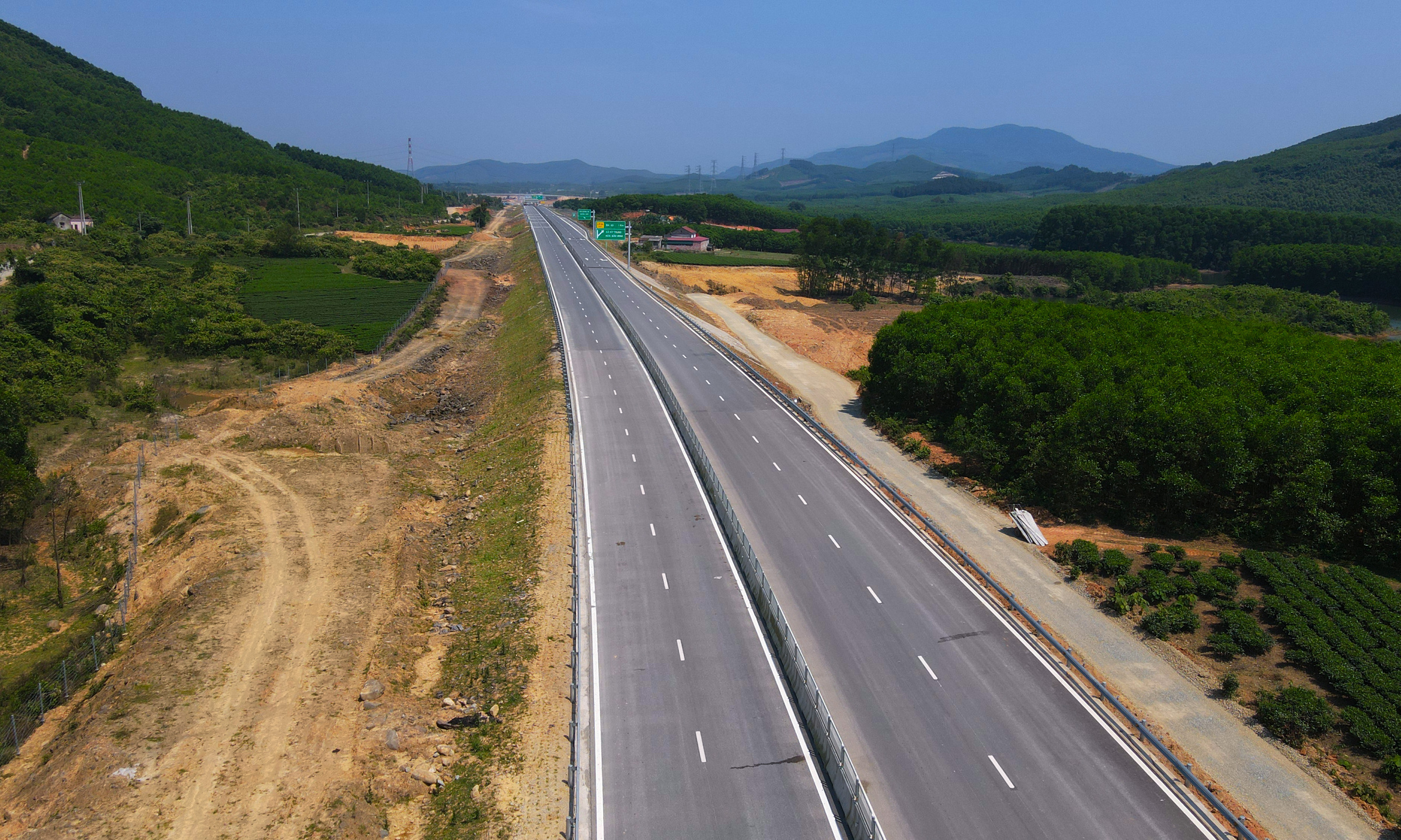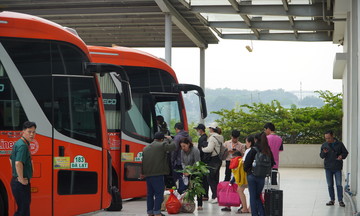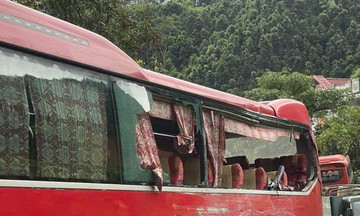The 9 component projects included in the proposed expansion are: Mai Son - National Highway 45, National Highway 45 - Nghi Son, Nghi Son - Dien Chau, Bai Vot - Ham Nghi, Ham Nghi - Vung Ang, Vung Ang - Bung, Bung - Van Ninh, and Van Ninh - Cam Lo.
These projects, ranging from 35 km to 66 km in length and currently with 4 lanes and a 17-meter roadbed, are proposed to be expanded to 6 lanes as planned.
Xuan Truong proposes to implement the project as a PPP under a build-operate-transfer (BOT) contract, combining equity and commercial loans without using state budget funds. The company commits to allocating the necessary finances, personnel, and equipment for timely implementation, complying with all regulations on investment, construction, environmental protection, and traffic safety.
 |
Ham Nghi - Vung Ang expressway through Ha Tinh. Photo: Duc Hung |
Previously, the Ministry of Construction proposed two options for expanding 15 component projects of the north-south expressway. Option 1 combines the north-south expressway sections into a single project totaling 966 km with a total investment of 128,292 billion VND.
Option 2 suggests combining the sections into two projects. Project 1 would include 8 component projects from Mai Son to Cam Lo, totaling 415 km and requiring an investment of 54,180 billion VND. Project 2 would encompass 7 component projects from Quang Ngai to Dau Giay, totaling 551 km with a total investment of 74,110 billion VND.
Currently, 6 domestic investors have proposed participating in the expansion of the north-south expressway from 2-4 lanes to 6 lanes under the PPP model: Deo Ca Group, Son Hai Group, Phuong Thanh Transportation Construction Company, VIDIFI, VEC, and Rang Dong Joint Stock Company.
Approximately 1,375 km of the north-south expressway, ranging from 2 to 4 lanes, has already been constructed. 654 km, belonging to phase 1 (2017-2020), are operational; 721 km, part of phase 2 (2021-2025), are under construction and expected to be completed in 2025-2026.
Due to limited resources, many sections were built with only 2-4 lanes, which does not meet current traffic demands and poses risks of congestion and safety hazards. The government has directed the Ministry of Construction to study options for expanding the entire route to 6 lanes, aiming to commence some component projects in 12/2025.
Anh Duy












